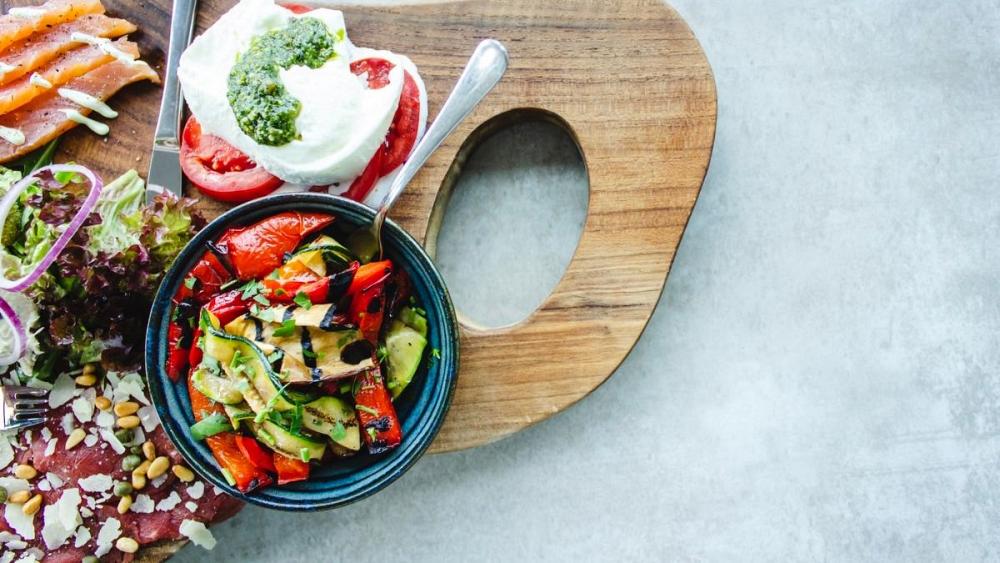When was the last time you used a food app? Whether it was to order a Sunday night takeaway, stock up on a few boxes of granola bars or check the calories in ¾ of a sliced avocado – it has become a way of life. With more than $14 billion being poured into 1000 food system start-ups over the past few years, innovation has become the dominant ingredient in the food sector.
We caught up with insiders of the Food Tech industry to find out what is cooking when technology is added to the mix. How have our food habits changed?
We like convenience
Only 15% of consumers know what their dinner will be hours in advance. Technology has improved accessibility– find, grab and get. This on-demand culture has naturally morphed our food behaviors as well. Research shows that on-the-go consumers have less time to shop but are a lot more spoiled by choice. This has given rise to meal replacements which is a faster way to get your food.
RTD (ready to drink) and full-meal bars are “the ultimate convenience food” according to Ivan Farneti, the co-managing partner at Five Seasons Ventures, a Venture Capital fund which invests in products solving the global challenges of the food industry. “This is a new fast-growing category. Demand is picking up, and convenience in a bottle resonates well as a solution to a problem,” adds Ivan.
An example of a meal replacement drink is Huel. A ready to drink meal in a bottle that takes a minute to prepare and it only requires adding water to the mix (over 40 million meals were sold in just 3 years!). “It provides you with all the carbohydrates, protein, fats, fibre and all 26 essential micro nutrients your body needs to thrive”- according to the brand’s non-executive director Jamal Benmiloud.
You are suggested to gradually build your “Human Fuel” (as the name stands for) intake. A scoop of the product contains about 153 calories and can be used for both weight loss and weight gain. Jamal agrees the product serves society’s need for food on the go. “For the first time people who don’t have time can now eat a nutritionally complete meal. As you only use the product you need to consume, and it has a year-long shelf life, Huel produces zero food waste,” adds Jamal.
Ivan added that it’s useful when “people have no access to alternatives, or have no time to eat, or are restricted by cost, or are using these products to lose weight.” Jamal shares Huel’s community is also very diverse and includes “busy mums, to firemen to tired office workers”- it’s a drinkable meal on the go to match a technologically advanced society.
Technology is helping our food become more sustainable
Did you know that it takes an estimated 125 liters of water for a single apple to be produced? Bear this is mind the next time you’re binning a less than perfect piece of fruit. Impossible Foods have commented that “it is now possible to have a burger that tastes like meat and has emitted 89% less greenhouse gases than a conventional animal-derived beef burger.”
Impossible Foods, Beyond Meat and Foods for Tomorrow are the new players redefining our perception of meat and catering to the increased demand for more sustainable food options, with fans including Serena Williams and Leonardo Di Caprio. “There is a consumer momentum in plant-based protein that mimics meat in flavour and taste,” according to José Luis Cabañero, CEO of Eatable Adventures, the creator of Europe’s largest food start-up ecosystem.
It’s an industry that can be worth over $140 billion over the next 10 years. Alternative soy, pea and potato protein burgers appeal to both vegetarians and meat eaters – even Burger King launched 0% meat patties earlier in the year. “Plant based nutrition is only going to increase, we shall identify how to increase plant production with minimal water usage and avoid depleting soil nutrients,” continues José.
It is important to care about not only what is eaten, but what is left over. Innovative apps such as Too Good To Go use technology in an effort to eliminate food waste; they bridge the gap between retailers with excess food and savvy ‘food waste warriors’ who are always on the lookout for a meal bargain.
The start-up co-founder Jamie Crummie shares his observations: “The more users who engage with the platform, the more aware they become about the scale and size of the issue of food waste – importantly too, they understand how they can have a positive impact.”
What has technology’s impact been on this? “The awareness surrounding environmental consciousness in consumers has certainly gained momentum over the past few years. Tech has certainly been a driver in this due to the nature of its reach. Apps have driven engagement through their accessibly and simplicity,” adds Jamie.
Personalised food is the future of food
The future is not only digital, it is personal and it’s about modifying your meal to suit you. Food personalisation is an encompassing concept. On the surface, it can be emotional. For example customising a food product externally or gifting a name branded chocolate, leaves a memory that lasts long after the taste is gone. On a deeper level, food personalisation is based on individual likes and dislikes.
“It is related to the rise of the ‘fast casual’ movement.” Otherwise known as premium, healthier fast food restaurants. “Consumers can choose the content of their dish with a high degree of personalisation; it is designed with transparency in mind. The meal can be adapted according to the client’s taste or nutritional preferences,”advises José. Leon, Pod or Batavia Healthy Food offer a higher quality of food (which is reflected in the price) and this is a signal of the evolving traditional fast food model.
“Online, services like Deliveroo Editions are one of the earliest that allow selecting specific dishes from multiple restaurants in a single order.” continues José. A personally curated meal experience from several food outlets is only a click away; this is a rising trend.
Mucho, the ‘personal food stylist’ creates personalised recipes and shopping lists which not only reflect your taste in food, but your lifestyle as well. Your data is stored in-app so future suggestions are even more accurate. The office ‘cloud canteen’, Feedr, offers personalised meals for corporate teams which allows individual answers to the group question ‘Where are we ordering lunch from?’.
For dietary reasons or for personal preferences, technology has given rise to a bespoke outlook on food. One approach does not fit all. “I have a number of personal dietaries constrains myself – I cannot eat gluten, lactose or sugar and therefore my daily food routines need to have a lot of personalisation.” says José. What about discovering the difference between good food and good food for you? Companies like Habit use your genetic information to create a bespoke nutrition plan.
We’re told health food personalisation is still a very niche market. But it is also where the real innovation and change will take place.
Words: Tzvete Doncheva


















